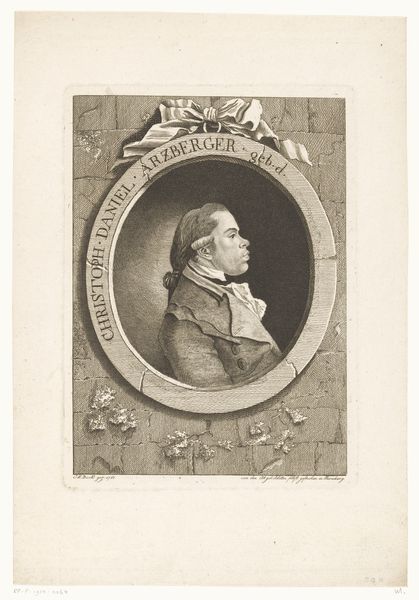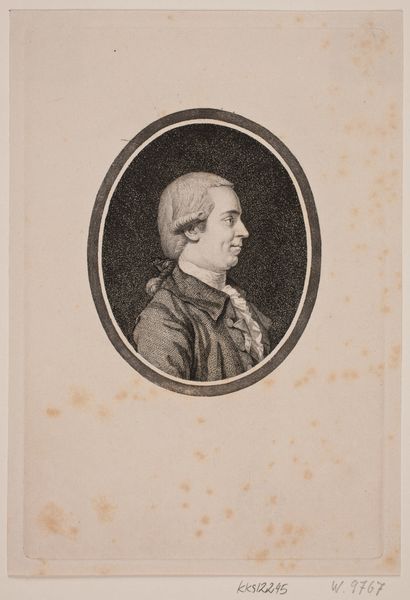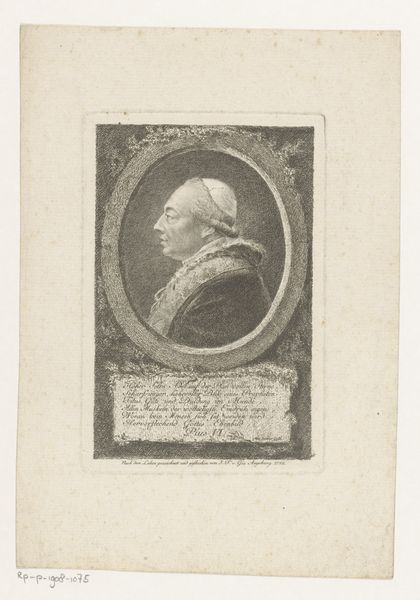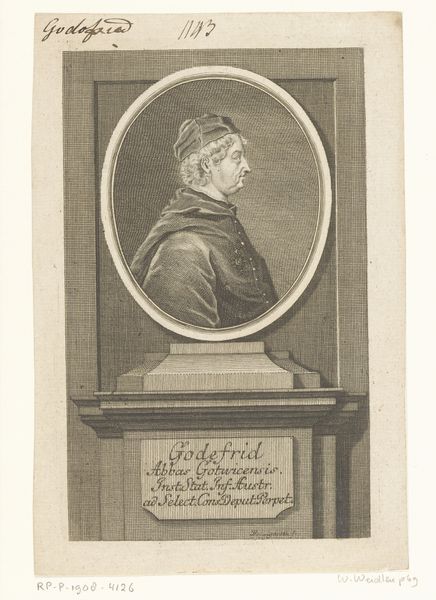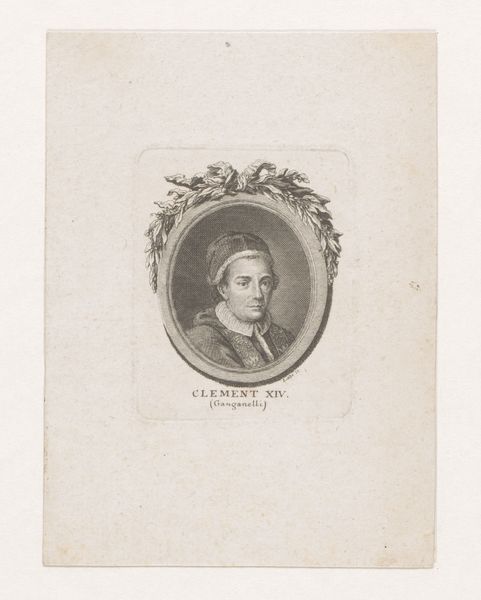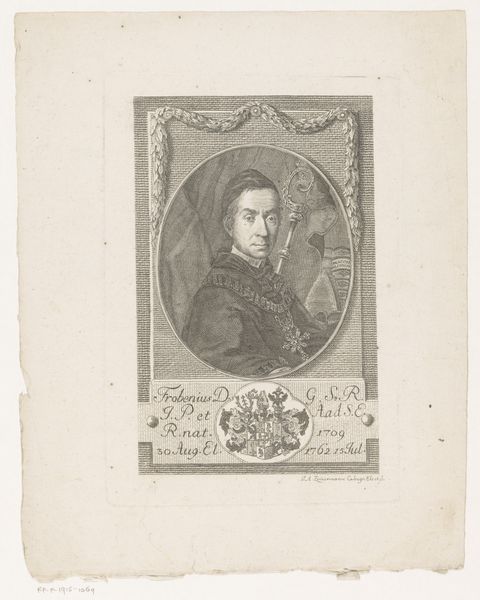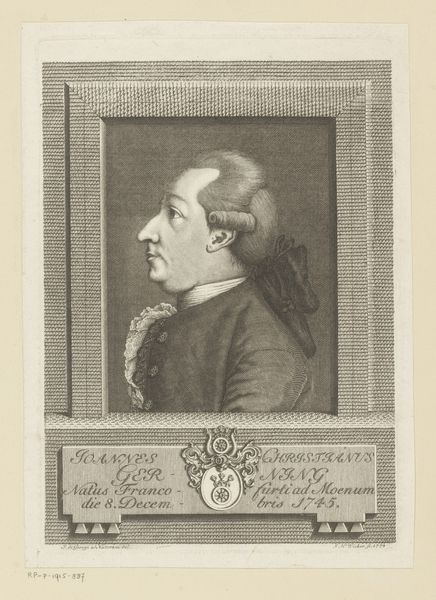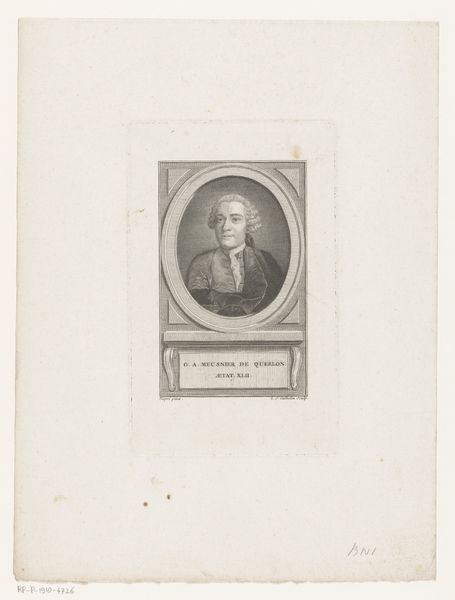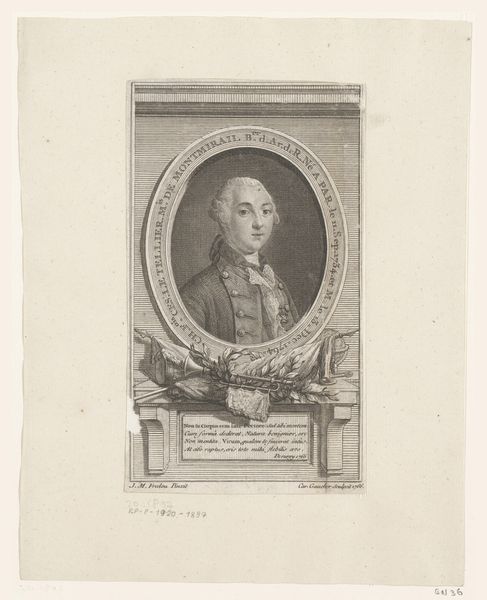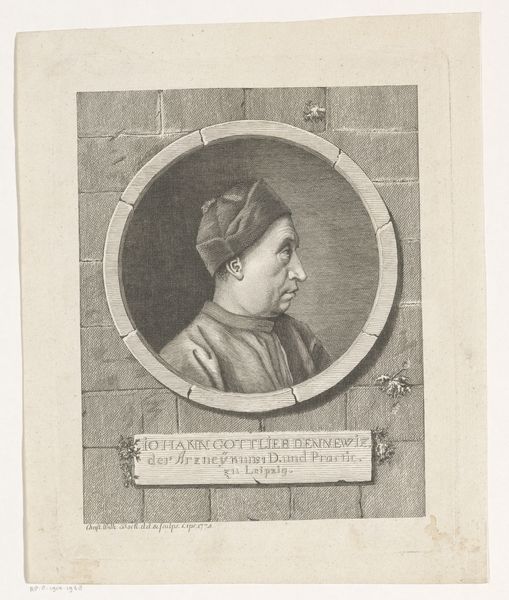
Dimensions: height 225 mm, width 155 mm
Copyright: Rijks Museum: Open Domain
Curator: Well, this looks to be an engraving, perhaps a portrait, given its style. Its diminutive scale seems rather delicate. Editor: Indeed. We're looking at an engraving from 1778, "Portret van Johann Christian Gerning," created by Johann Heinrich Wicker. Curator: It strikes me that it's not just a portrait, but a social artifact. Consider the printing process itself—the labor of the engraver meticulously translating an image into lines on a plate, likely copper, used to produce multiple impressions. It’s inherently a process of reproduction and dissemination. Editor: Precisely. Engravings like this were critical in circulating images and ideals in the 18th century. It enabled a broader public to visualize figures of authority or note, shaping social perceptions of power and status. We're seeing this portrait potentially finding itself into personal collections, even being circulated among intellectual circles. Curator: Exactly. This speaks to consumption. Who was commissioning these portraits and what value did the print itself carry beyond simple imagery? Editor: One should note the subject's ornamentation, the medal around his neck, all indicating his societal status, a subtle detail that the Baroque framework of history-painting lends additional weight. This is not just a likeness; it's a carefully constructed presentation intended to convey authority and importance. The public reception of these portraits played a significant role in shaping Gerning’s legacy. Curator: True, but what's intriguing is the interplay between art and commerce here. The value resided not only in the image, but in the very act of possessing a replicated image created through highly skilled labor, something both refined and available for circulation. The printing workshops become nodes in the production and distribution of reputation. Editor: Agreed. The formal style aligns it with a public role, with the engraver, Wicker, serving as a conduit. Together they offer more than personal insight, but contribute instead towards a curated display. Curator: All considered, it leaves one pondering, not simply at representation, but at the whole complex dance of making and being seen in that era. Editor: And its reflection back upon us today, given the social impact that the portrait, engraving and all, ultimately had.
Comments
No comments
Be the first to comment and join the conversation on the ultimate creative platform.
